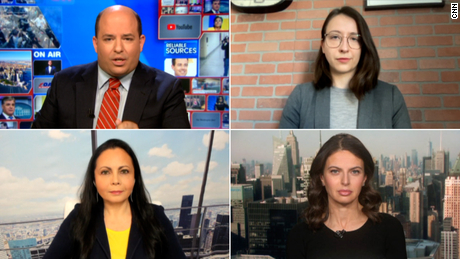Tips for navigating social media during war in Ukraine

The images out of Ukraine are gripping, graphic and, in some cases, incredibly moving. And they are likely to become even more intense if Russia moves to try to crush Ukrainian resistance.
But the recording and delivery of the images and words via social media are not nearly as new, game changing or revolutionary as some are claiming since the Russian invasion began.
In a New York Times column headlined, “We have never been here before,” Thomas L. Friedman, wrote, “This is the first war that will be covered on TikTok by super-empowered individuals armed only with smartphones, so acts of brutality will be documented and broadcast worldwide without any editors or filters.”
Yes, to the part about TikTok, but as to the rest of the sentence, we have been there for more than a decade on other platforms — during the Arab Spring of 2011 and battlefields in Syria and Yemen since, to name just two. And the words and images have been distributed worldwide with almost no editing or filtering.
The technology is not any different, says Lisel Hintz, an assistant professor of international relations at the Johns Hopkins School of Advanced International Studies.
“Yes, we have TikTok. Yes, we have maybe more users on those platforms and perhaps wider Internet penetration in some of the countries as opposed to Yemen or Syria,” Hintz said. “But, in general, the ways that information is being shared is not new. It’s not like the advent of camera phones, which absolutely changed the playing field allowing a new kind of documentation and citizen journalism.”
Images captured on smartphones and uploaded to such platforms as Facebook, YouTube and Twitter starting in 2011 both in Middle East countries and the U.S. in the Occupy Wall Street protest were game changing both in sharing images and words that previously might have been censored. But as much as that result was widely hailed as a force for democracy, it has also come to be understood as a major factor in a media ecosystem poisoned by misinformation, disinformation and confusion.
In fact, some social media information and images coming out of Ukraine can add to the misinformation and “fog of war” if not treated with great care, context and vetting. And those are not often characteristic of citizen posts on platforms like Twitter.
So far, what we have seen out of Ukraine is clearly not without precedent. When it comes to deploying social media tools to cover conflicts in real-time, we have been here before in the last decade.
The tendency to claim revolutionary change as a result of new media is in part the result of journalism’s appetite to be the first teller of the news when it comes to deciphering and announcing change — and the more revolutionary the better.
“I don’t think we are seeing significant changes in technology per se. Rather, public use of the technology is growing,” said Philip Seib, author of the book “Information at War: Journalism, Disinformation and Modern Warfare.”
Seib cited the Twitter account of The Kyiv Independent, an online, English-language, pro-Ukraine news organization, as an example of this growth: Last week, before Russia’s invasion, @KyivIndependent had 20,000 followers. At the time of writing, the account had 1.4 million followers.”
Hintz believes one of the reasons for that heightened interest, especially in the west, stems from the fact that Europeans are the victims in this war rather than residents of Yemen or Syria.
“Maybe there are new platforms, but there is no new advent of technology,” she said. “To me this is more about the issue and the perception of community.”
Hintz said she believes the war deserves all the attention it is getting.
But speaking of some of the social media posts from journalists and citizens voicing empathy with Ukrianian citizens under attack, she added, “They’re horrified that they look like us. To me, that is what is driving a lot of this. Not all of it. Again, the geopolitical dimension is really important. But I think the attention has to do with the perception that this in Europe and that’s new. A, it’s not new that it’s in Europe. And B, just because it’s in Europe doesn’t mean we should care more.”
Source: Read Full Article


